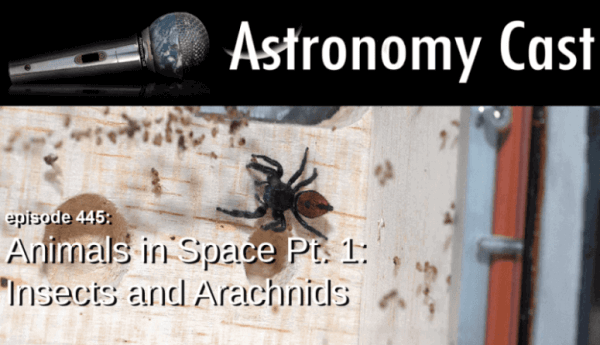Pulsars are rotating neutron stars aligned with Earth in just such a way that the energy radiated from their magnetic poles sweeps across us with each rotation. From this, we see a regular pulse of radio light, like a cosmic lighthouse. The fastest pulsars can rotate very quickly, pulsing hundreds of times per second. These are known as millisecond pulsars.
Continue reading “Astronomers Find the Fastest Spider Pulsar, Filling in the Missing Link in Their Evolution”Astronomy Cast Ep. 445: Animals in Space Pt. 1: Insects and Arachnids
We’ve talked about animals traveling to space in the past, but it’s time to take another look, with many other creatures making the trip to the void. Today we’re going to talk about the spineless insects and arthropods, and those tough as nails waterbears – tardigrades.
Visit the Astronomy Cast Page to subscribe to the audio podcast!
We usually record Astronomy Cast as a live Google+ Hangout on Air every Friday at 1:30 pm Pacific / 4:30 pm Eastern. You can watch here on Universe Today or from the Astronomy Cast Google+ page.
Giant Spiders on Mars!
Eek, spiders! All right, so it’s not actually little green arachnids we’re talking about here, but they are definitely spidery features. Called araneiform terrain, these clusters of radially-branching cracks in Mars’ south polar surface are the result of the progressing spring season, when warmer temperatures thaw subsurface CO2 ice.
As dry ice below the surface warms it can sublimate rapidly and burst through the frozen ground above, creating long cracks. If the material below is dark it can be carried upwards by the escaping gas, staining the surface.
Each dark splotch is around 100 meters wide.
This image was acquired by the HiRISE camera aboard NASA’s Mars Reconnaissance Orbiter on September 26, from a distance of 262 km (163.8 miles). See the full-size scan here, and check out more recent HiRISE images in the November PDS release here.
Credit: NASA/JPL/University of Arizona



